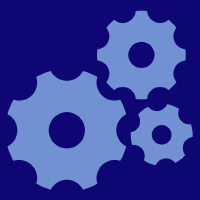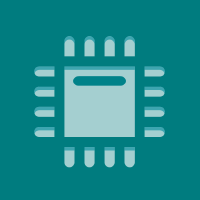Topic Editors




Artificial Intelligence in Smart Industrial Diagnostics and Manufacturing—Third Edition
Topic Information
Dear Colleagues,
In industrial production, particularly in sectors involving metal parts and components, complex processes such as machining, stamping, precision casting, powder metallurgy, injection molding, and other specialized synthesis procedures are integral. These processes require stringent control to ensure the desired product quality. Metal parts have widespread applications across various industries and are essential to daily life. However, given the variety of part types and sizes and the complexities involved in tasks such as surface inspection, size measurement, and target positioning, these processes often face challenges in terms of precision and accuracy. Traditional manual inspection techniques cannot meet the growing demands of modern production.
To address these challenges in industrial production, the integration of intelligent detection systems powered by artificial intelligence (AI) offers significant promise. These AI-based solutions can learn and recognize key information, such as surface defects, dimensions, and the precise positioning of metal parts. Unlike traditional vision algorithms, advanced and optimized AI algorithms can effectively mitigate issues arising from significant reflection, glare, or brightness during image acquisition, ensuring high recognition speeds, enhanced accuracy, and versatility. These AI-powered systems have the potential to revolutionize various production processes by offering robust solutions to longstanding challenges. The application of AI in smart industrial diagnostics and manufacturing (SIDM-AI) is an area of great potential, merging AI technologies with vision processing solutions. AI is a rapidly evolving field that encompasses a broad range of technologies, including robotics, language recognition, image recognition, and natural language processing. As AI has matured, its capabilities to simulate human intelligence have advanced significantly, enabling machines to perform tasks that once required human cognition. While AI may not replicate human consciousness, its ability to process information and make decisions allows it to perform tasks with precision and efficiency, often exceeding human capabilities.
In this context, AI’s role in industrial quality inspection processes, including surface inspection, assembly inspection, precision measurement, and workpiece positioning, is becoming increasingly important. Compared to traditional manual inspection, AI-based solutions offer a more cost-effective, faster, and more accurate alternative. This shift is particularly transformative in reducing reliance on labor-intensive manual inspection while improving product quality. The advancement of SIDM-AI is already enhancing industries like automobile manufacturing, building materials, 3C manufacturing, and textiles. Moreover, the integration of AI technologies with medical image processing, particularly in biomedical engineering, is contributing to the advancement of healthcare diagnostics. Medical image processing, combined with AI, is revolutionizing the detection, analysis, and interpretation of medical images, enabling faster and more accurate diagnoses. AI can significantly enhance the ability to identify and diagnose medical conditions from imaging modalities such as CT scans, MRIs, and X-rays, offering real-time, automated, and highly accurate analyses of medical data.
Given the potential of AI to enhance both the industrial and biomedical sectors, this Topic will explore the state of the art in AI-based smart diagnostics, with a focus on visual detection, computer vision technologies, and medical image processing. The aim is to showcase the latest advancements in these fields, emphasizing the synergy between AI and biomedical engineering in the context of medical image processing. We will also examine how these innovations can benefit industries by reducing production costs, improving operational efficiency, and accelerating the transition toward more intelligent, automated environments. Contributions to this collection will highlight cutting-edge research and applications that bridge AI, industrial diagnostics, and medical image processing, with a particular focus on how these technologies are transforming both the manufacturing and healthcare sectors. This body of work will underscore the growing role of AI in advancing technological solutions that provide both economic and societal benefits.
Suggested topics include, but are not limited to, the following:
- Smart image identification based on computer vision technology;
- AI-driven medical image segmentation and diagnosis in biomedical engineering;
- Intelligent detection based on machine learning;
- Visual classification based on machine learning;
- Smart detection of images based on AI;
- Segmentation tasks of images based on AI;
- The fusion of images based on AI;
- Smart industrial analysis based on machine learning;
- Smart industrial diagnostics based on machine learning.
Prof. Dr. Kelvin Wong
Prof. Dr. Andrew W. H. Ip
Prof. Dr. Dhanjoo N. Ghista
Prof. Dr. Wenjun (Chris) Zhang
Topic Editors
Keywords
- artificial intelligence
- machine learning
- industrial diagnostics
- big data analysis
- image processing
- virtual reality
- deep learning
- image segmentation
- optimized algorithms
- image acquisition
- intelligent machines
- machine language
- precision measurements
Participating Journals
| Journal Name | Impact Factor | CiteScore | Launched Year | First Decision (median) | APC | |
|---|---|---|---|---|---|---|

Applied Sciences
|
2.5 | 5.5 | 2011 | 19.8 Days | CHF 2400 | Submit |

Journal of Manufacturing and Materials Processing
|
3.3 | 5.2 | 2017 | 16.2 Days | CHF 1800 | Submit |

Machines
|
2.5 | 4.7 | 2013 | 16.9 Days | CHF 2400 | Submit |

Sensors
|
3.5 | 8.2 | 2001 | 19.7 Days | CHF 2600 | Submit |

Technologies
|
3.6 | 8.5 | 2013 | 21.8 Days | CHF 1600 | Submit |

Preprints.org is a multidisciplinary platform offering a preprint service designed to facilitate the early sharing of your research. It supports and empowers your research journey from the very beginning.
MDPI Topics is collaborating with Preprints.org and has established a direct connection between MDPI journals and the platform. Authors are encouraged to take advantage of this opportunity by posting their preprints at Preprints.org prior to publication:
- Share your research immediately: disseminate your ideas prior to publication and establish priority for your work.
- Safeguard your intellectual contribution: Protect your ideas with a time-stamped preprint that serves as proof of your research timeline.
- Boost visibility and impact: Increase the reach and influence of your research by making it accessible to a global audience.
- Gain early feedback: Receive valuable input and insights from peers before submitting to a journal.
- Ensure broad indexing: Web of Science (Preprint Citation Index), Google Scholar, Crossref, SHARE, PrePubMed, Scilit and Europe PMC.

